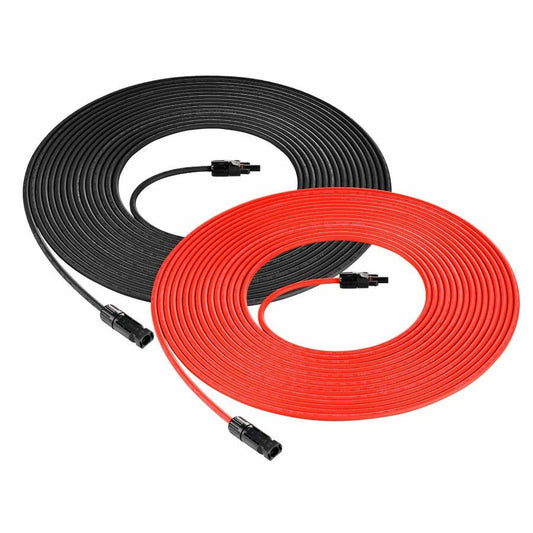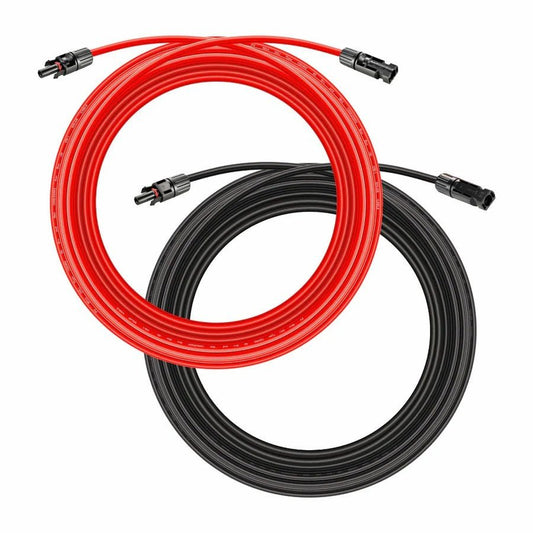Your Cart
Is LiFePO4 battery better than lithium?

The battery industry has advanced rapidly in recent years, making superior technologies more affordable. Lithium iron phosphate (also known as LiFePO4 or LFP) is the latest development in this rapidly changing industry.
The LFP battery type has come down in price in recent years — and its efficiency has dramatically improved. It’s surpassing lithium-ion (Li-ion) as the battery of choice for many applications, including off-grid and solar power — and even Electric Vehicles (EVs).
LiFePO4 batteries are similar to Li-ion but have significant advantages that make them the ideal option for consumer-grade backup power solutions.

How Do the Chemistries of LiFePO4 and Lithium Ion Batteries Differ?
LiFePo4 and Li-ion batteries are rechargeable batteries that use lithium ions to harness and release electrical energy. While they are similar in many ways, they also exhibit some glaring differences.
Lithium Ion Batteries
Lithium-ion batteries comprise a variety of chemical compositions, including lithium iron phosphate (LiFePO4), lithium manganese oxide (LMO), and lithium cobalt oxide (LiCoO2).
These batteries all have three essential components: a cathode, an anode, and an electrolyte. The electrolyte for these batteries is lithium salt, whereas the anode is carbon. The cathode is where the chemistries differ—they consist of one of the lithium metal oxides that give them their respective names.
LiFePO4 vs. Lithium Ion Batteries: How Do They Compare?
Safety
LiFePO4 batteries are safer than Li-ion due to the strong covalent bonds between the iron, phosphorus, and oxygen atoms in the cathode. The bonds make them more stable and less prone to thermal runaway and overheating, issues that have led to lithium-ion batteries having a reputation for a higher risk of battery fires.
Stability is why LFPs are the standard in off-grid and solar power applications. When the batteries are in the home, there is no room for error concerning overheating and other issues. Homeowners can confidently store their LiFePO4 battery in the house without worrying about fire safety issues.
Energy Density
Li-ion batteries typically have a higher energy density than LFPs. The energy density of a battery is a measure of how much energy it can store per unit of volume or weight. Li-ion batteries can store more power per volume or weight unit than LFPs.
For example, the energy density of a typical Li-ion battery is around 45–120 Wh per lb (100-265 Wh per kg), while the energy density of a LiFePO4 battery is about 40–55 Wh per lb (90-120 Wh per kg). The expansive energy density range of Li-ion batteries is due to this statistic encompassing all types of Li-ion batteries, including technologies only suitable for electric cars and other applications.
For off-grid power solutions, LiFePO4 remains supreme, even when considering the slightly lower energy density. This difference is negligible as you move into larger stationary power solutions. For instance, the FC Power Kits are set-it-and-forget-it battery solutions. You won’t notice a slight difference in energy density.
Weight
The weight of a battery bank has some correlation to energy density, as mentioned above. LiFePO4 battery banks may weigh slightly more than comparable Li-ion batteries, while some LFPs may be lighter because the metals used in their construction are lighter.
Either way, any slight variation in weight pales in light of the other enormous advantages of LFPs.
Li-ion batteries with higher energy densities—such as nickel-cobalt-aluminum (NCA) and nickel-cobalt-manganese (NCM)—are no longer considered ideal for off-grid and solar applications. Instead, home power solutions use safer, longer-lasting technologies like LiFePO4. A safer battery is more important than a slight difference in weight.
Temperature Range
LiFePO4 batteries offer a wider operating temperature range. They can function well in temperatures ranging from -4°F (-20°C) to as high as 140°F (60°C).
In contrast, Li-ion batteries have a much smaller temperature range of 32°F (0°C) to 113°F (45°C). Users need to store Li-on batteries in climate-controlled spaces during the depths of winter or the heat of summer.
LiFePO4 batteries are safe to store in the house, shed, garage, or other indoor space without air conditioning. They’re less susceptible to temperature changes, giving you more options for locating the battery without potential damage or reduced efficiency.
Lifespan
Many Li-ion batteries can go through around 500 charge and discharge cycles before degrading in performance. LiFePO4 batteries can go through thousands of cycles before their performance begins to drop.
Cost
The cost per watt-hour of LiFePO4 and Li-ion batteries can vary wildly depending on the manufacturer, market demand, and capacity. LiFePO4 batteries don’t use nickel or cobalt, materials that can fluctuate dramatically in supply and price.
LiFePO4 is still a relatively new battery chemistry, meaning there are fewer manufacturers and less supply, which can make LiFePO4 batteries slightly more expensive Wh for Wh.
Self-Discharge Rate
LiFePO4 batteries have a self-discharge rate of around 1-3% per month, depending on usage, temperature, and other factors. The low self-discharge rate means you can leave the battery in storage for months. It will still supply substantial power even after a period of disuse.
To follow best practices, top off your battery at least every few months to keep it optimized for use.
Voltage
LiFePO4 batteries have a lower nominal voltage than Li-ion batteries, typically around 3.2V per cell, compared to 3.6V to 3.7V per cell for Li-ion batteries.
The voltage can impact the design of battery packs and the voltage requirements of devices that use them.
Is LIFEPO4 Better Than Lithium-Ion?
LiFePO4 surpasses lithium-ion in safety, boasting a longer lifespan and greater thermal stability, making it ideal for prolonged use. While lithium-ion may be initially cheaper and require less upkeep, its susceptibility to overheating poses risks. Choose LiFePO4 for durable, safe off-grid power solutions with minimal environmental impact.
LiFePO4 vs. Lithium Ion Batteries: Which One Is Right for You?
If you want to invest in a battery bank that you can use off-grid regularly, LiFePO4 is the right choice. The added safety features alone make it worth the investment — you won’t have to worry about the thermal runaway and overheating risks associated with Li-ion batteries.
The longer lifespan also makes LFP batteries the clear frontrunner. With a cycle life over five times as long, your LiFePO4 battery banks will still be running long after comparable Li-ion batteries have reached the end of their lifespan. You will save yourself money in the long run and minimize battery e-waste.
Plus, you can turn any LiFePO4 portable power station from EcoFlow into a solar generator by adding one or more solar panels!
No comments





















0 comments